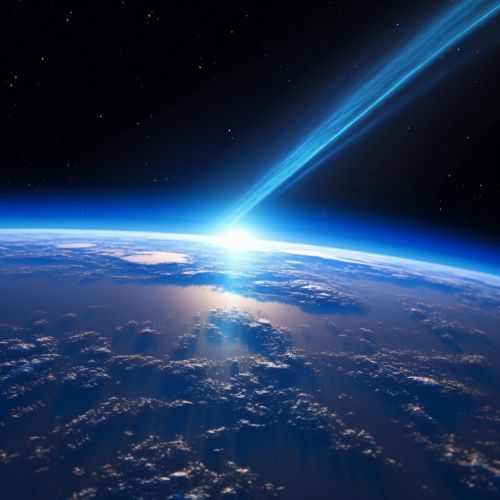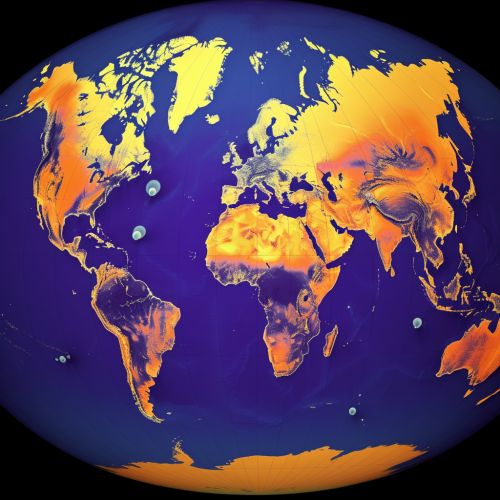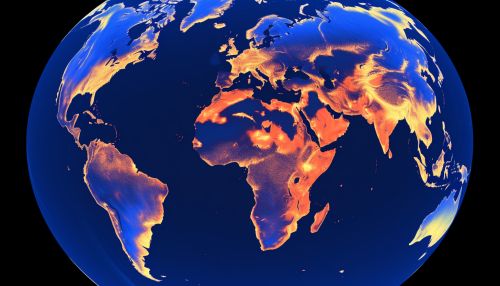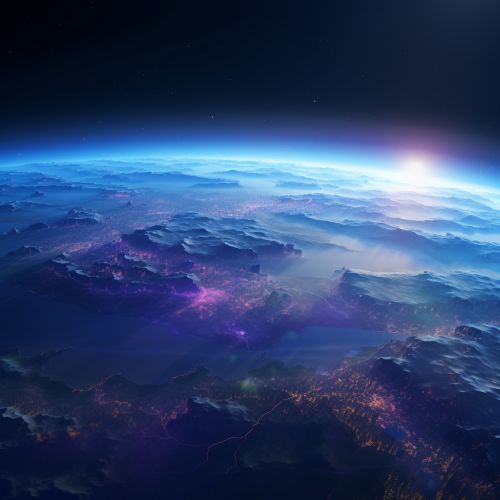Ozone Layer
Introduction
The ozone layer is a layer of ozone high up in the Earth's atmosphere, in the region of the atmosphere called the stratosphere. It absorbs most of the Sun's harmful ultraviolet radiation, preventing it from reaching the Earth's surface. This layer of gas is crucial for life on Earth, as it protects us from harmful solar radiation that can cause skin cancer and cataracts, suppress the immune system, and damage terrestrial and aquatic ecosystems.


Formation and Composition
The ozone layer is composed primarily of the gas ozone (O3), a molecule consisting of three oxygen atoms. This gas is formed when oxygen molecules (O2) are split by solar radiation into individual oxygen atoms, which then combine with other oxygen molecules to form ozone. This process, known as photodissociation, occurs primarily in the stratosphere, where the concentration of ozone is the highest.
Distribution and Thickness
The thickness of the ozone layer varies depending on the season and latitude. It is generally thicker near the poles and thinner near the equator. The layer is also thicker during the spring and fall and thinner during the summer and winter. Despite these fluctuations, the average thickness of the layer is about 300 Dobson Units, which is equivalent to a layer of ozone 3 millimeters thick at standard temperature and pressure.


Role in the Atmosphere
The primary function of the ozone layer is to absorb the majority of the Sun's harmful ultraviolet-B (UV-B) and ultraviolet-C (UV-C) radiation. Only a small portion of UV-A radiation, which is less harmful, reaches the Earth's surface. By absorbing UV-B and UV-C radiation, the ozone layer prevents these harmful rays from reaching the Earth's surface and causing damage to living organisms.
Ozone Depletion
Ozone depletion refers to the thinning and loss of ozone in the stratosphere. The primary cause of this depletion is the release of certain man-made chemicals, particularly chlorofluorocarbons (CFCs) and halons, which contain chlorine and bromine. These chemicals can remain in the atmosphere for a long time and are carried up to the stratosphere by winds and atmospheric circulation. Once in the stratosphere, they can catalyze reactions that destroy ozone molecules.


The Ozone Hole
The term "ozone hole" refers to a region of severe ozone depletion in the stratosphere over Antarctica that occurs each spring. This phenomenon was first discovered in the 1980s. The formation of the ozone hole is driven by unique meteorological conditions in the Antarctic and the presence of ozone-depleting substances in the atmosphere.
Impact of Ozone Depletion
The depletion of the ozone layer has a number of harmful effects on the environment and human health. Increased levels of UV-B radiation reaching the Earth's surface can cause skin cancer and cataracts in humans, harm aquatic ecosystems, and reduce crop yields. It can also affect the climate, as ozone is a greenhouse gas that contributes to the warming of the atmosphere.


Mitigation Efforts
In response to the threat posed by ozone depletion, the international community has taken action to reduce the production and consumption of ozone-depleting substances. The Montreal Protocol on Substances that Deplete the Ozone Layer, adopted in 1987, has been successful in phasing out the production of most of these substances. As a result, the ozone layer is expected to recover to its pre-1980 levels by the middle of the 21st century.
